One of the most memorable experiences on our recent road trip to Québec was visiting Grosse-Île and the Irish Memorial National Historic Site as a day trip from Québec City. My husband had discovered through ancestral research that his family had arrived in Grosse-Île when they immigrated to Canada in 1847 so we were keen to visit the site. On a trip to Ireland with our daughter a few years ago, we visited the church where his great-great-great grandparents had been married and Cobh where their ship departed Ireland so visiting Grosse-Île seemed like an important step in closing that loop and connecting to the past.
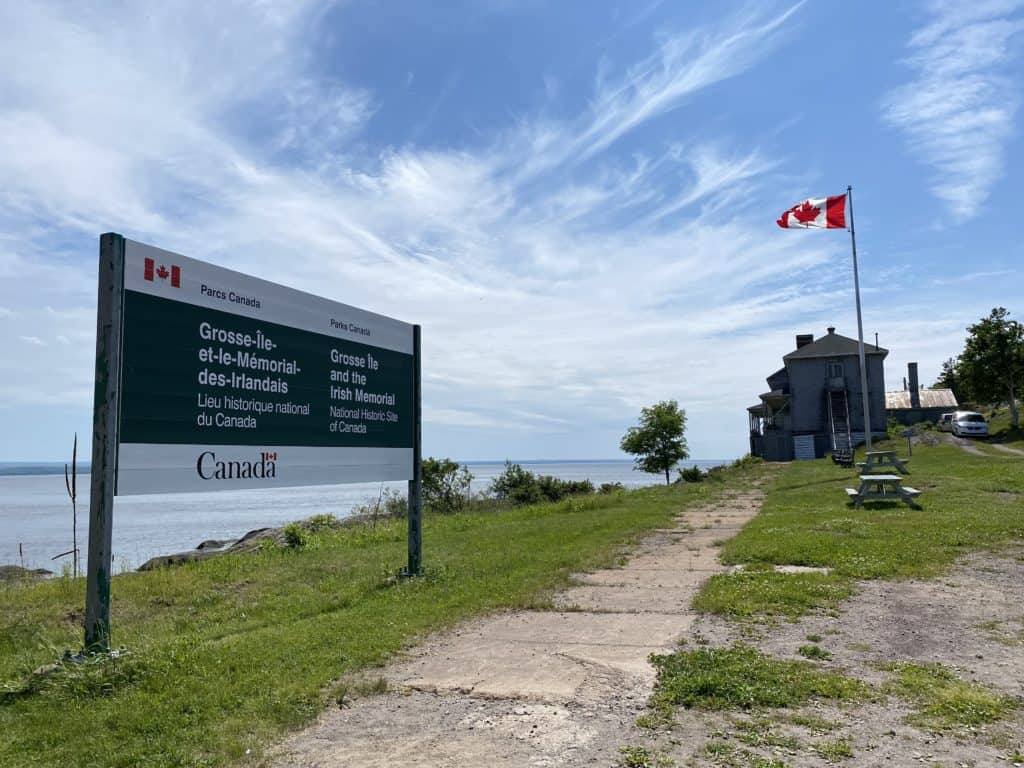
History of Grosse-Île and Canadian Immigration
Grosse-Île is an island (part of the Isle aux Grues archipelago) located in the middle of the St. Lawrence River about 48 km (30 miles) downstream from Québec City. Concern over infectious diseases led to the establishment of a quarantine station for arriving immigrants on the island in 1832.
Once newly arrived prospective immigrants had completed their quarantine period then they were cleared to travel onward to the port of Québec City where they would be processed as immigrants to Canada. More than 4 million immigrants passed through Grosse-Île between 1832 and 1950.
Increased Immigration and Infectious Diseases
After the Napoleonic Wars ended in Europe in 1815 growing numbers of people began leaving the British Isles to establish new lives in North America. By 1830 an average of 30,000 new immigrants were arriving annually in the port of Québec (the main gateway at the time to what is now Canada) and about two-thirds of these immigrants were from Ireland.
At the same time that immigration to North America was increasing there were major epidemic outbreaks ocurring in Europe and in Great Britain. What was referred to as the second cholera epidemic 1829-1837 hit Britain in 1831-2. These migrants were bringing the disease to North America which prompted authorities to set up the quarantine station on Grosse-Île in 1832.
Grosse Île was established as quarantine ground by an act of the Parliament of Lower Canada (what is now Québec) in 1832 to prevent the spread of cholera into the colony. The legislation required incoming passengers who showed signs of illness to wait out the presumed incubation period on the island.
There was a second cholera epidemic in 1834, the deadly typhus outbreak of 1847-8, another cholera outbreak in 1854 and then the epidemics subsided.
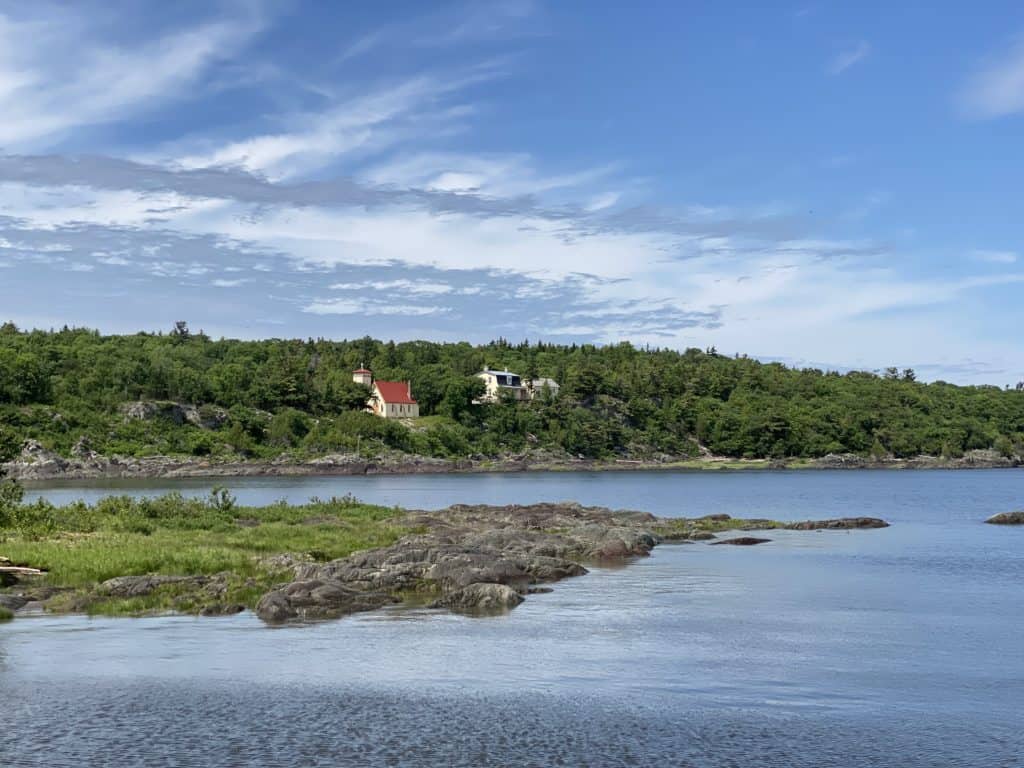
Typhus Epidemic of 1847
The catastrophic Irish Potato Famine began in 1845 and ultimately resulted in more than 1 million deaths and more than 1 million people fleeing Ireland. The worst year of the famine – 1847 – coincided with a typhus epidemic in Europe.
Unprecedented numbers of Irish immigrants (about 100,000 sailing for Québec in 1847) set sail on crowded ships with unsanitary conditions that allowed disease to spread unchecked. More than 5,000 immigrants died en route and many more were weakened by malnutrition and sick when they arrived at Grosse-Île.
The island did not have the facilities for treating large numbers of sick immigrants and at the time there wasn’t a good understanding of how infectious diseases were transmitted or how best to treat them. As a result thousands of immigrants died at Grosse-Île in 1847.
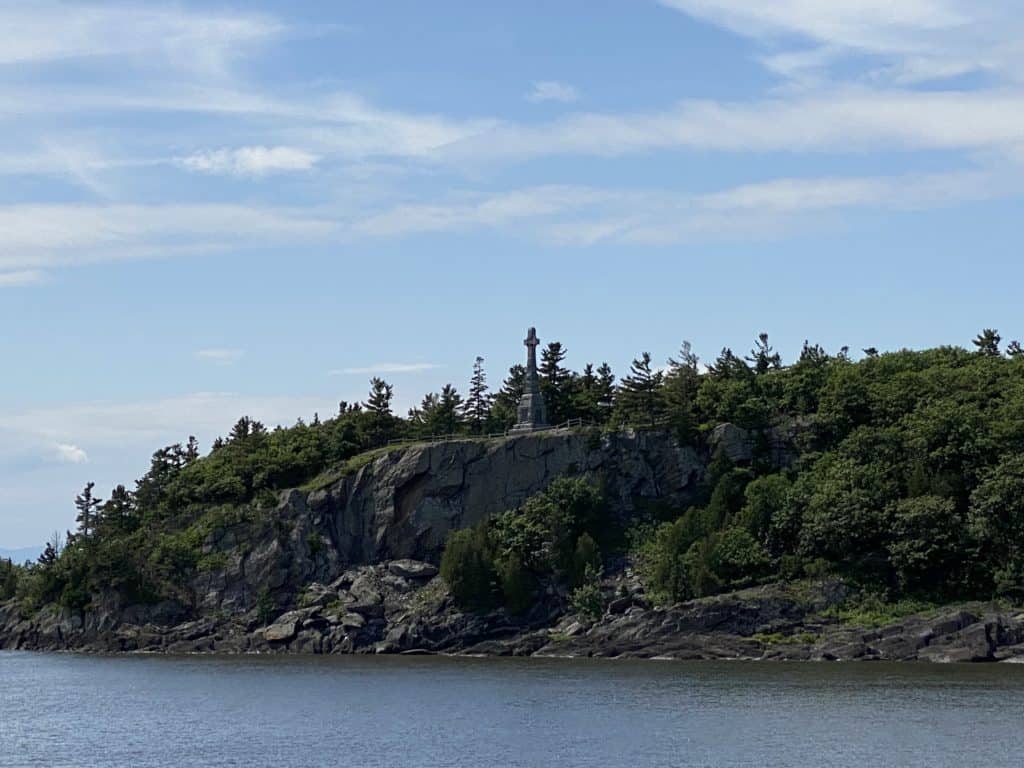
Advancements in Treatment of Infectious Diseases
In the years following 1847, lessons were learned about treating infectious diseases and efforts were made to modernize the facilities. Starting late in the 19th century, comfortable first, second and third-class hotels were established on the island and the processing of immigrants through quarantine became a much more efficient process.
Large numbers of immigrants continued to arrive and move through the facilities until the First World War and the Great Depression slowed immigration drastically. Soon after it was determined that quarantine was no longer needed in most cases as any illnesses could be treated on arrival at the Immigrant Hospital in Québec City so the Grosse-Île quarantine station was closed in 1937.
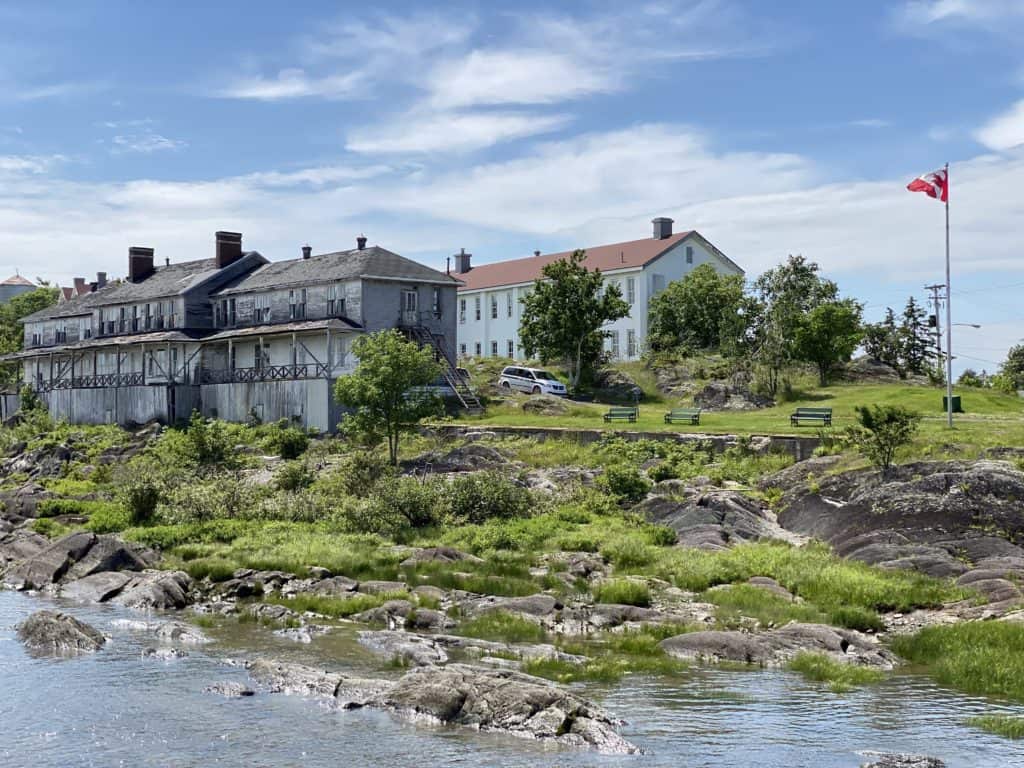
National Historic Site of Canada
Today Grosse-Ïle and the Irish Memorial National Historic Site of Canada commemorates the importance of immigration to Canada (especially through the entry port of Québec) as well as the tragic events experienced by Irish immigrants particularly during the typhus epidemic of 1847. The Grosse Île quarantine station was recognized as being of national historic significance in 1974 and has been managed since 1993 by Parks Canada.
Planning Your Visit to Grosse-Île, Québec
The departure point for visiting Grosse-Île is approximately a 45 minute drive from Québec City and 1.5 hours from Rivière-du-Loup. When we were planning our trip we had hoped to visit Grosse-Île on our way to Québec City from Rivière-du-Loup after our Gaspé road trip, however, the ferry was already sold out for that day so we had no choice but to visit on a day trip from Québec City.
How to get to Grosse-Île
There are only two ways to visit the island – by plane or by boat – but obviously travelling by boat is the most common. Les Croisières Lachance is a private ferry company that provides cruises to Grosse-Île, Quebec that depart from Berthier-sur-Mer on the south shore of the St. Lawrence River. Tickets for the cruise include the Parks Canada admission and tickets must be purchased in advance.
To get to Berthier-sur-Mer marina from Québec City, head south over Pierre-Laporte bridge and take Highway 20 East toward Rivière-du-Loup. Take exit 364, drive towards Berthier-sur-Mer and follow the signs to the marina. Berthier-sur-Mer is approximately 45 minutes from Québec City, 2 hours 50 minutes from Montréal, and one hour 25 minutes from Rivière-du-Loup.
Cruises are available beginning late May until early October and the timing of the visit varies. When we visited in June there was only one cruise a day which departed Berthier-sur-Mer at 9:45am arriving at Grosse-Île at about 10:30am. We had 4 hours on the island with the ferry departing again at 2:30pm. There are generally two cruises a day available in high season. Check the cruise schedule online for available dates and times.
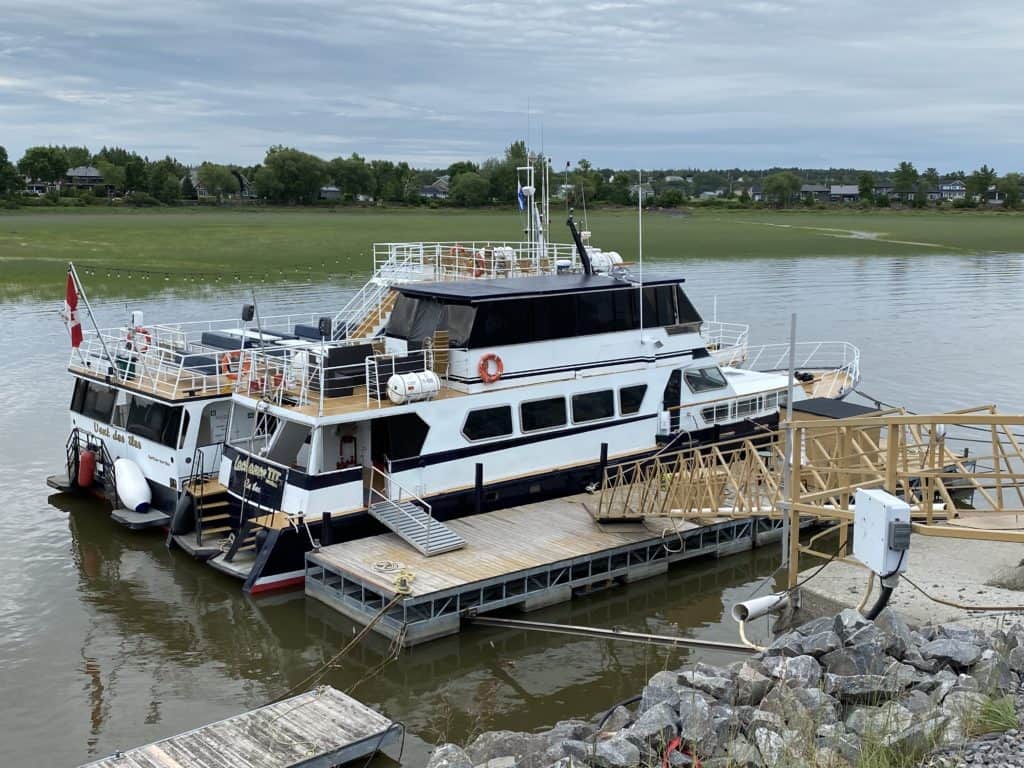

Our Day Visiting Grosse-Île
After a pleasant boat ride of approximately 45 minutes, we docked on Grosse-Île and were greeted by Parks Canada guides. My husband, daughter and I were the only English-speaking visitors so we had a private tour. My understanding is that visitors typically follow an Interpretive Trail with Parks Canada guides stationed at each point of interest, however, we visited when it wasn’t high season yet so had group tours with guides showing us around the island and costumed interpreters at a few locations.
The Parks Canada site is well-organized and our guide was a very knowledgeable university student who had worked at the site for multiple years and who provided a great deal of information about the history of the island and answered our many questions.
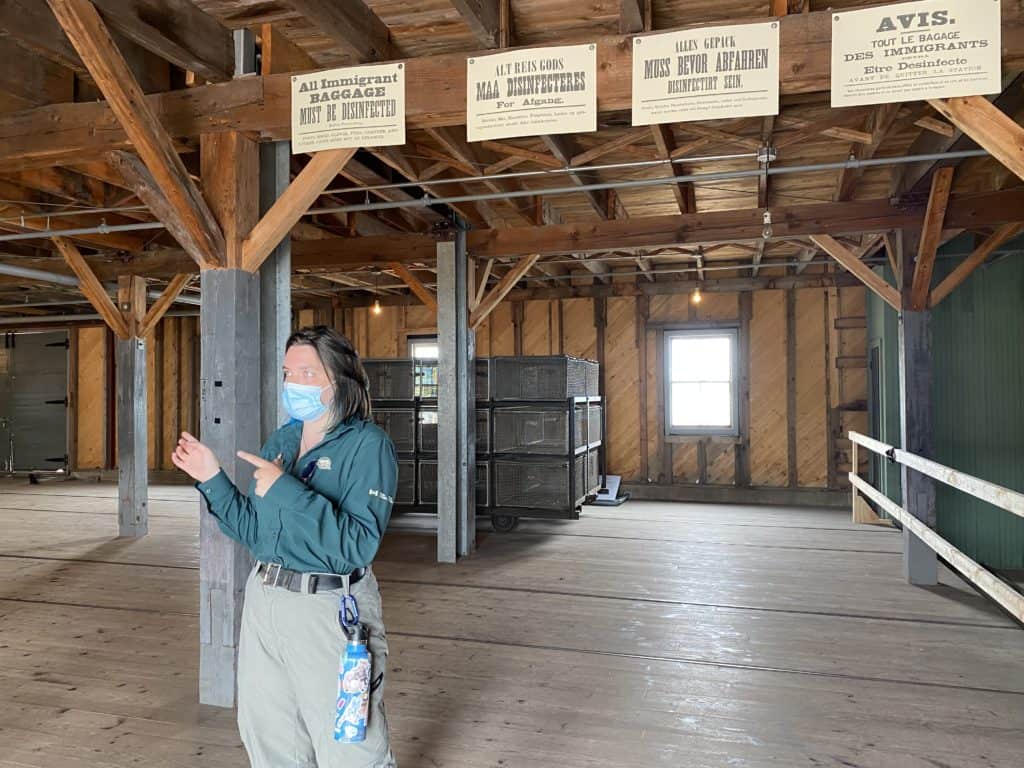
The island is divided into three distinct sectors which are linked by a road. The Western Sector contained the buildings where processing of the immigrants took place and was also the hotel sector for healthy immigrants. The buildings in the Western Sector which is closest to the dock include the disinfection building, hotels, bakery, the vaccination and medical examination office, and more. The Celtic Cross and the Irish cemetery are also in the Western sector.
The Central Sector was a village for people who worked on the island and the hospitals for sick immigrants as well as the Eastern Cemetery were located in the Eastern Sector. Our tour of the Western Sector in the morning was on foot whereas we had to board the trolley for the afternoon tour of the Central and Eastern Sectors.
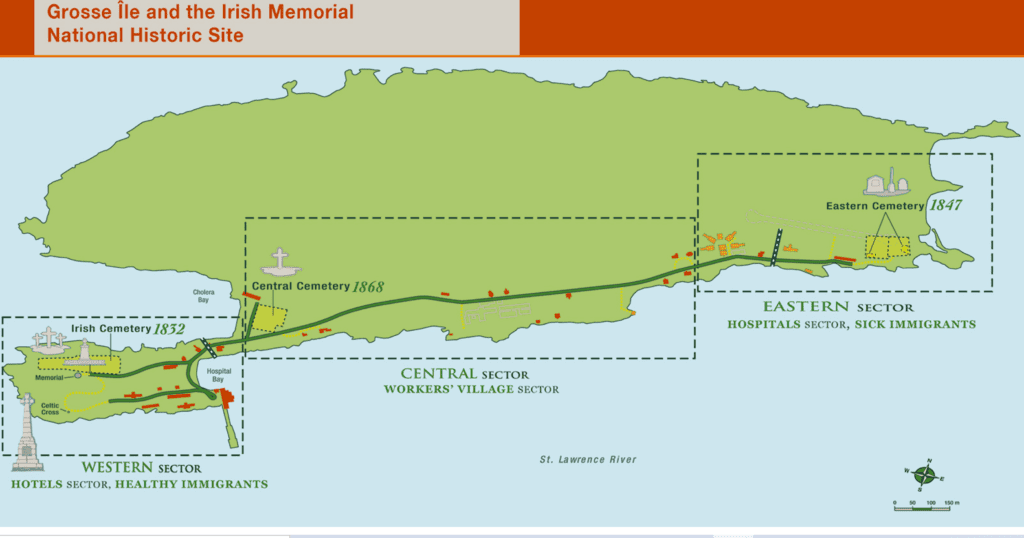
Western Sector Building Tour
Once we had been organized into our groups, we toured some of the buildings closest to the docks and learned about the medical inspection process that immigrants went through upon arrival.
In the Disinfection Building (the first building next to the quay), we were greeted by costumed interpreters dressed as nurses who conducted our “medical inspection” and then directed us to the disinfection station.
We toured the showers where arriving immigrants were sprayed with a mixture of water and mercury bichloride and the disinfection units that were used for laundry and other belongings.
There is a lot of historical information available to absorb in a short period of time. It wasn’t possible to read all of the information boards in the allotted time so I took photos of many of the boards so that I could read later .
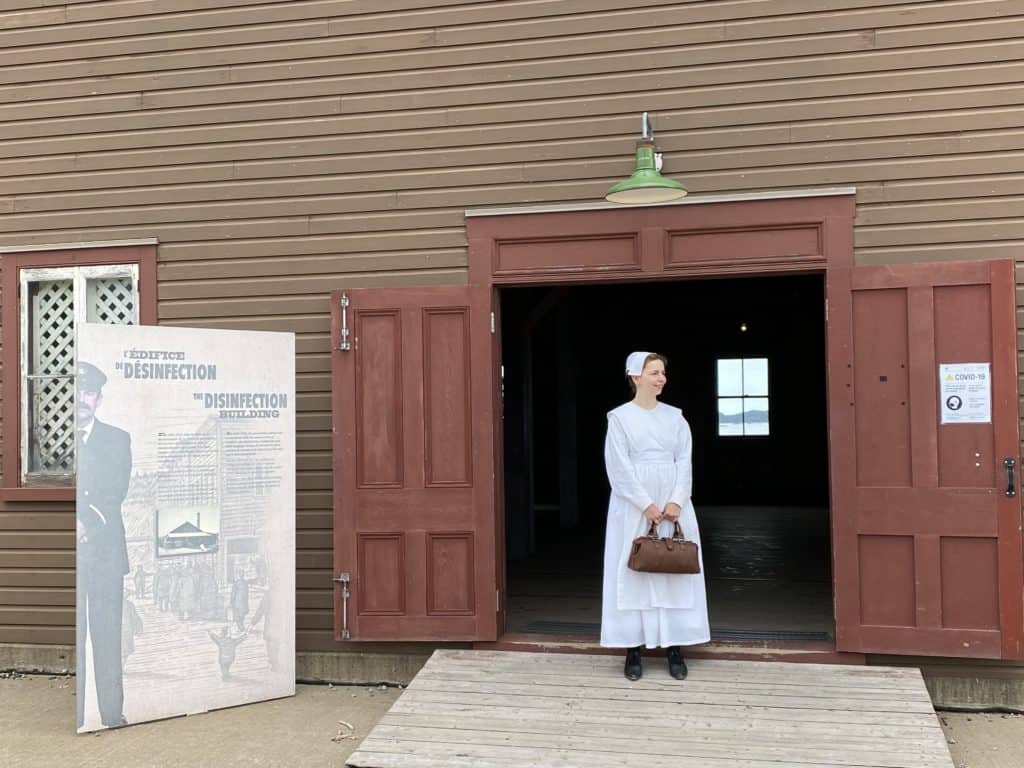
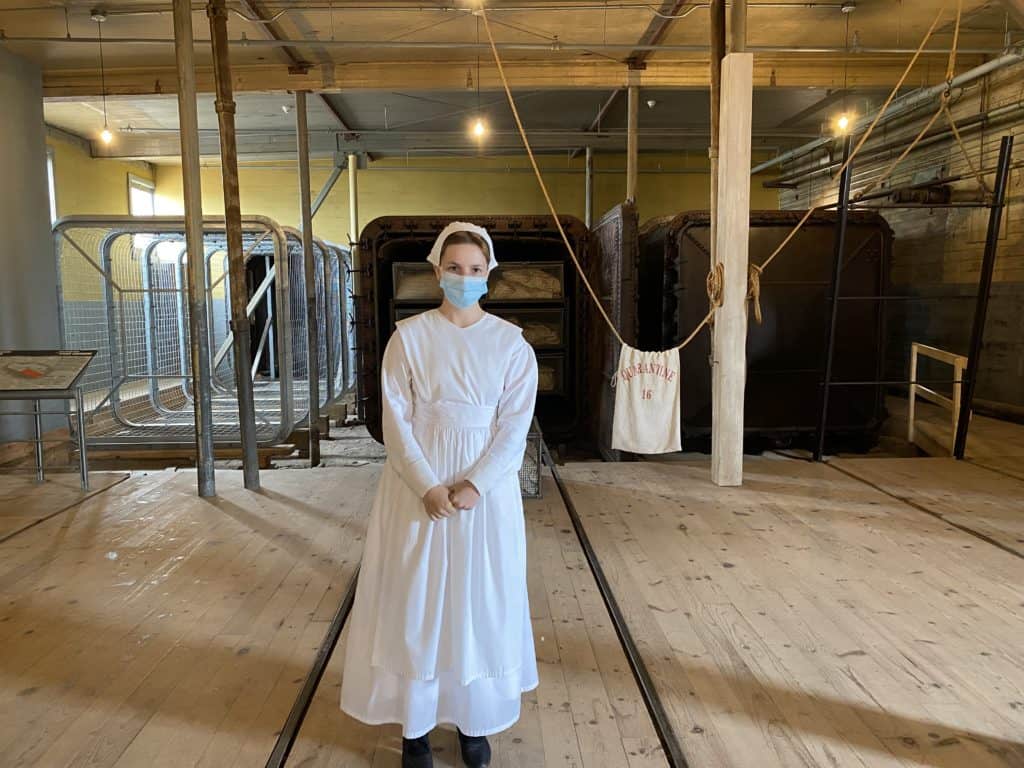
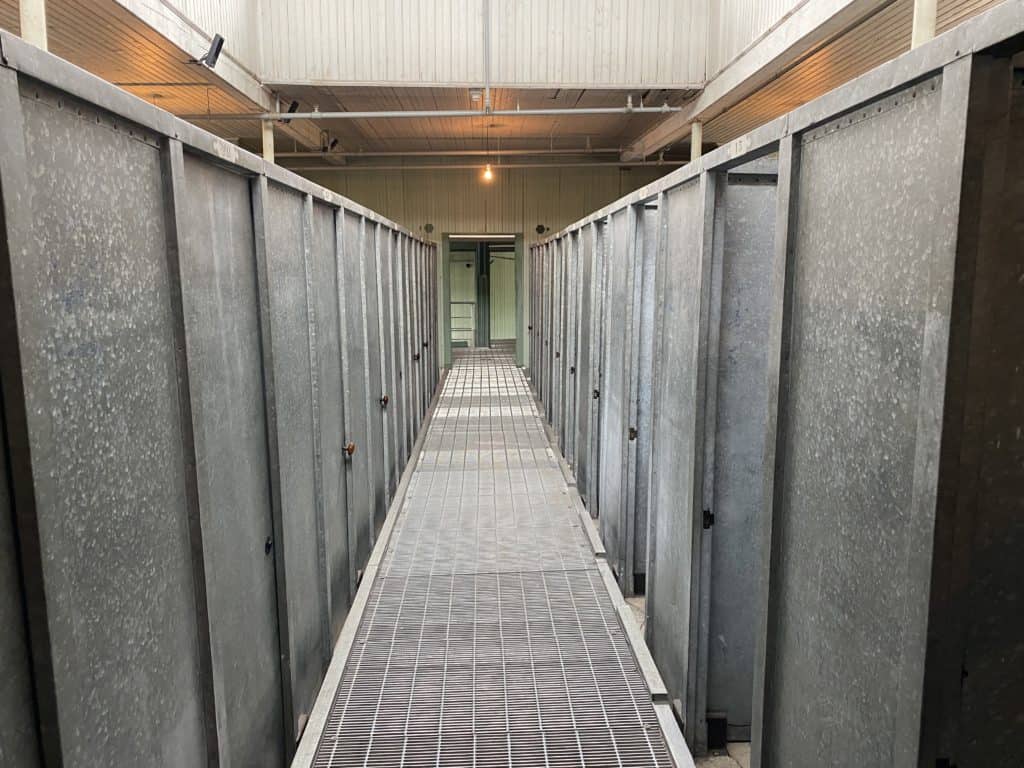
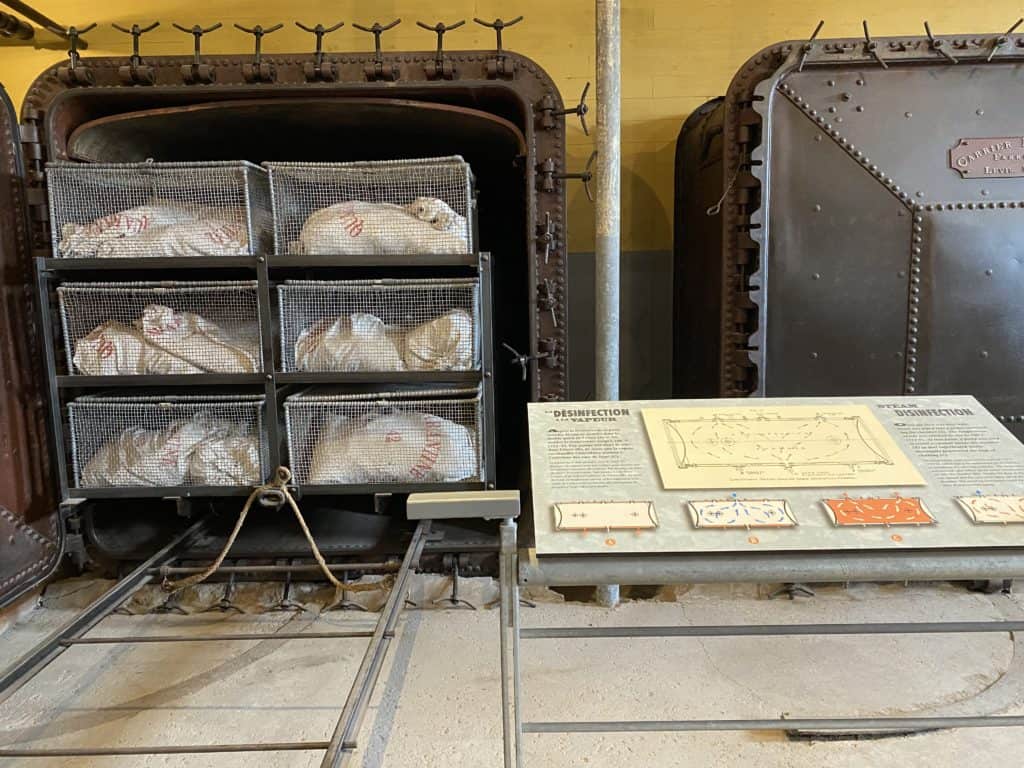
There is also a great deal of information available to educate visitors about the quarantine process as well as infectious diseases and how knowledge developed over time. If you enjoy learning the historical details then you will find there isn’t enough time to read all the information and should take photos here to read later as well.
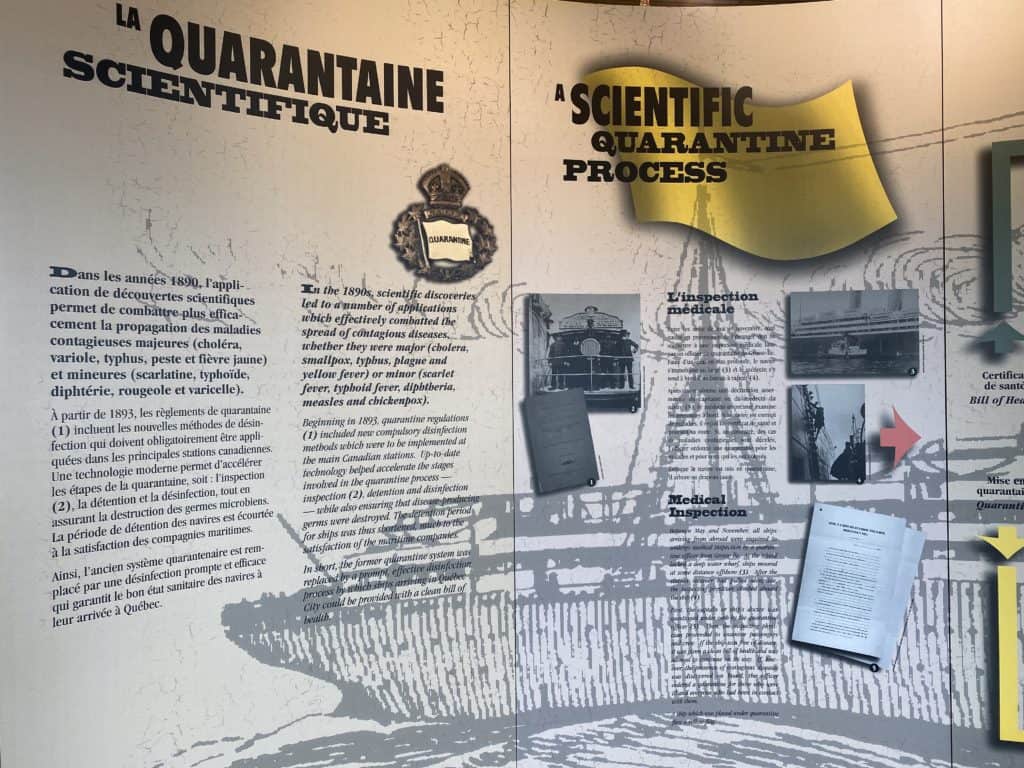
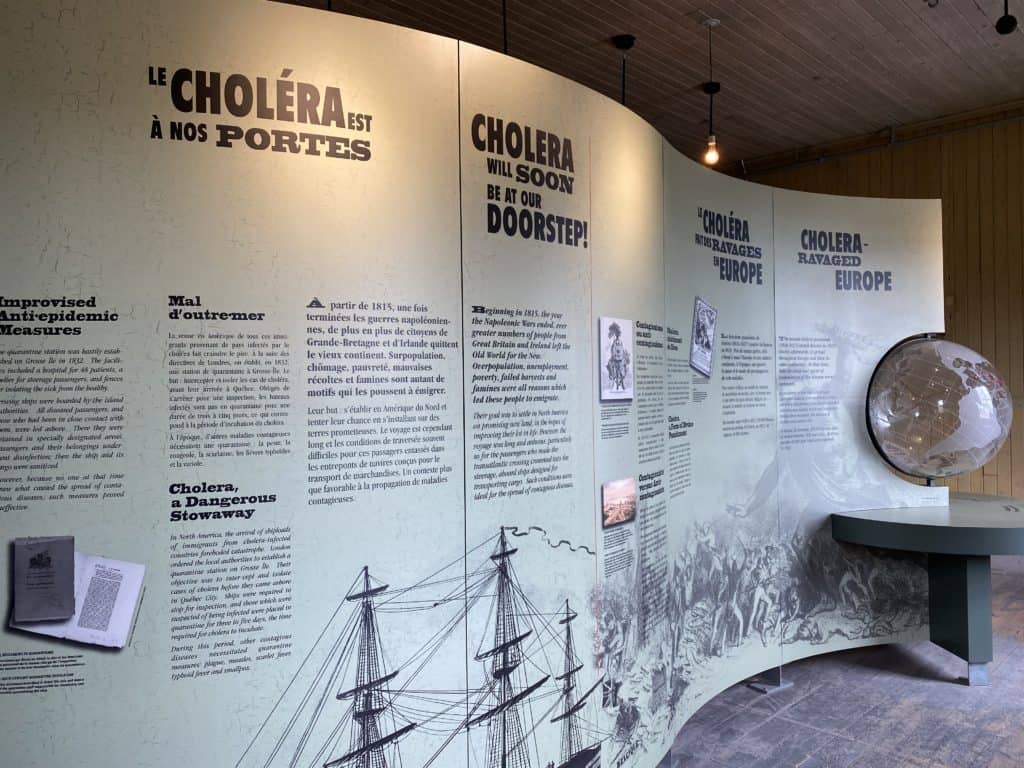
We continued our tour with some of the other buildings in this sector of the island including the hotels that were eventually established for various classes of immigrants.
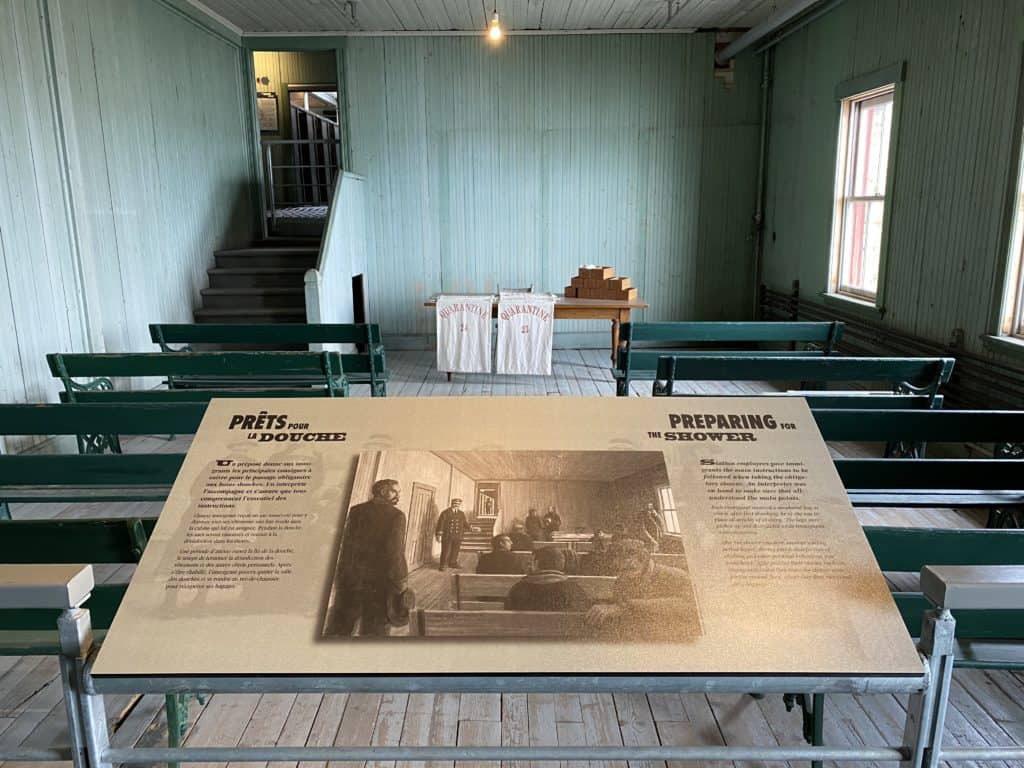
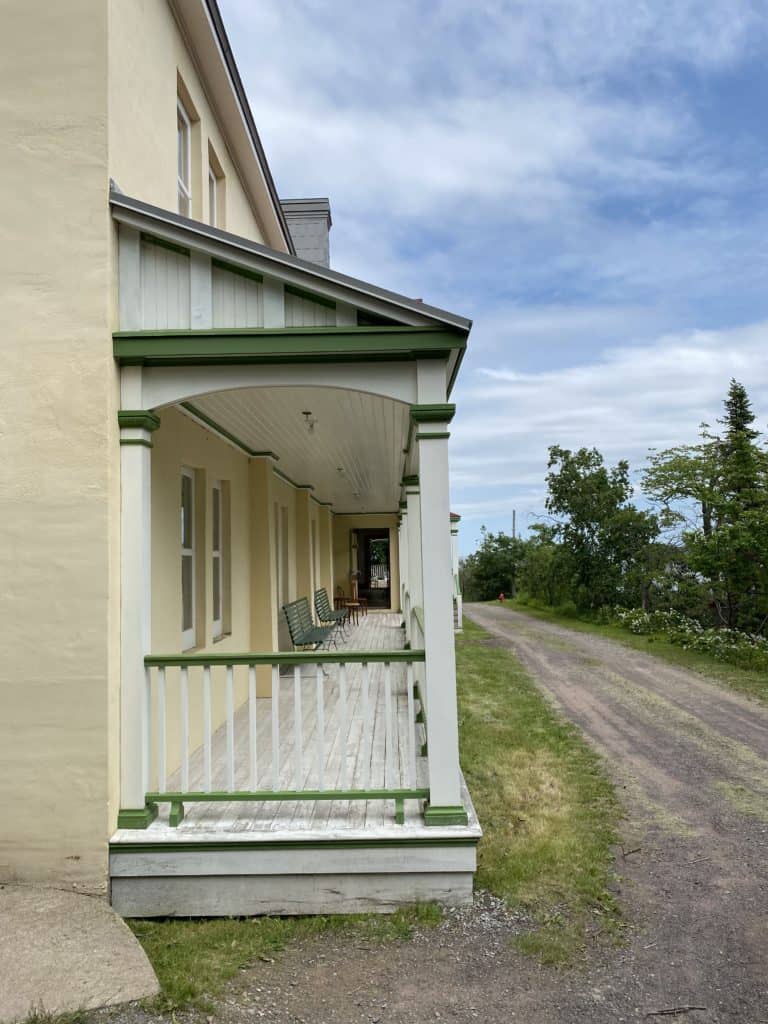
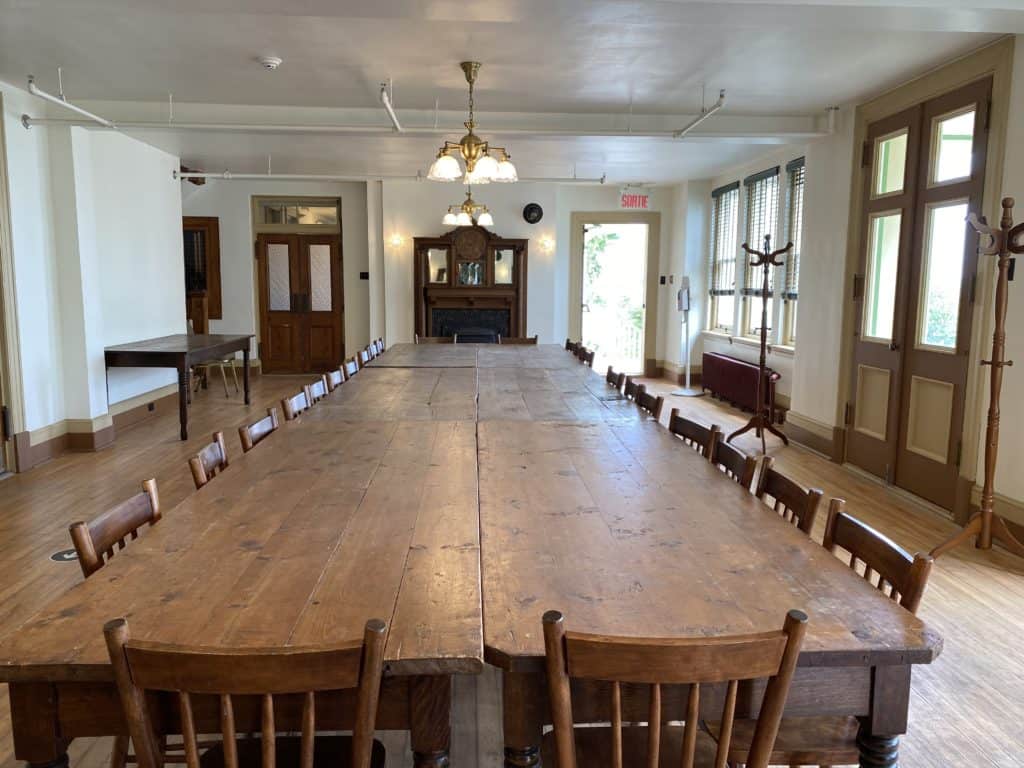
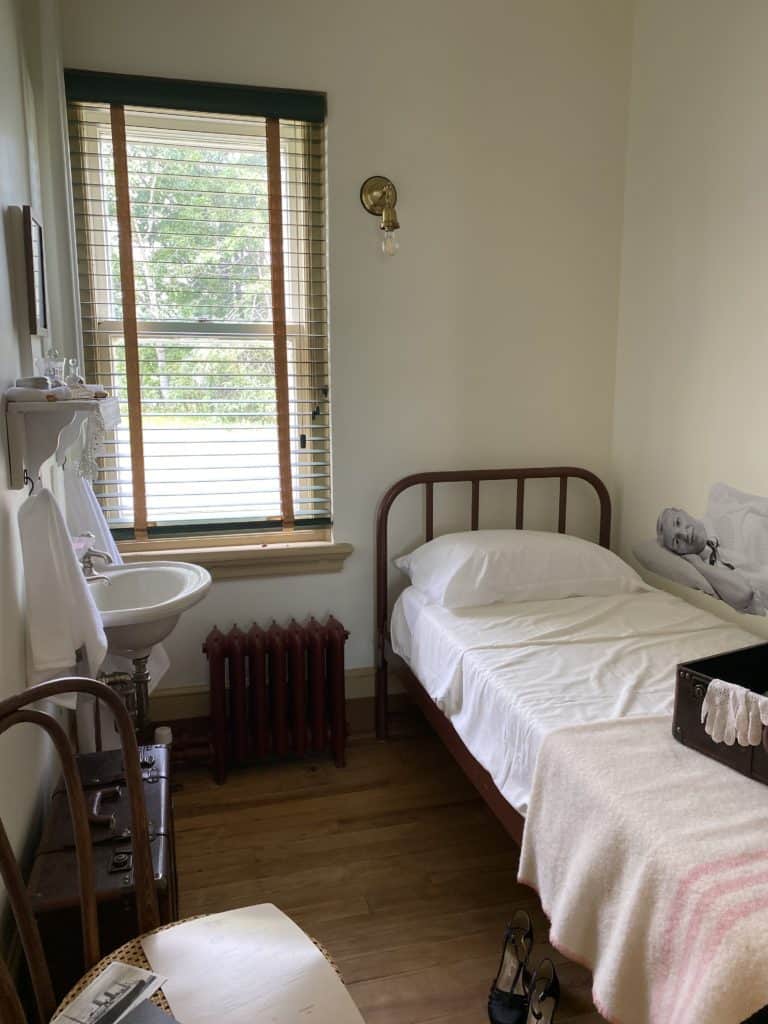
Celtic Cross
A short hike through a wooded area brought us to the foot of the Celtic Cross which is large enough to be seen from the water when approaching or departing the island. The monument was erected by the Ancient Order of the Hibernians and dedicated in 1909 to honour the memory of the thousands of Irish immigrants who died on Grosse-Île in 1847.
The inscription on the monument which is also in French and Irish reads “Sacred to the memory of thousands of Irish emigrants who, to preserve the faith, suffered hunger and exile, in 1847-48, and stricken with fever ended here their sorrowful pilgrimage.“

Irish Cemetery and Memorial
The Irish Cemetery with its simple white crosses was established in 1832 and individual burials took place there until 1847. The high rate of mortality during the typhus epidemic meant that trenches had to be dug to serve as mass graves. Of the 7,553 people buried in the Irish Cemetery, 1,545 are still unidentified.
(We visited in June 2022 and a couple of weeks later in early July a ceremony was held to mark the 175th anniversary of the Irish tragedy and 47 new Celtic crosses were erected to replace those installed in the 1960s.)
Nearby a memorial now lists the names of those who died at the quarantine station at Grosse-Ïle or on the boats waiting to disembark on the island. The memorial erected by Parks Canada in 1998 lists immigrants, employees and sailors who died here.
Among those is the young sister, Ellen, of my husband’s great-great grandfather whose name we were able to find on the memorial. There were so many boats arriving and so many ill passengers in 1847 that many had lengthy waits as the island facilities were not adequate to accommodate everyone. Ellen became ill on the journey from Ireland and died on board one of the ships waiting to disembark.
A list of the names engraved on the Memorial can be find online on the Parks Canada – Grosse-Ïle website.
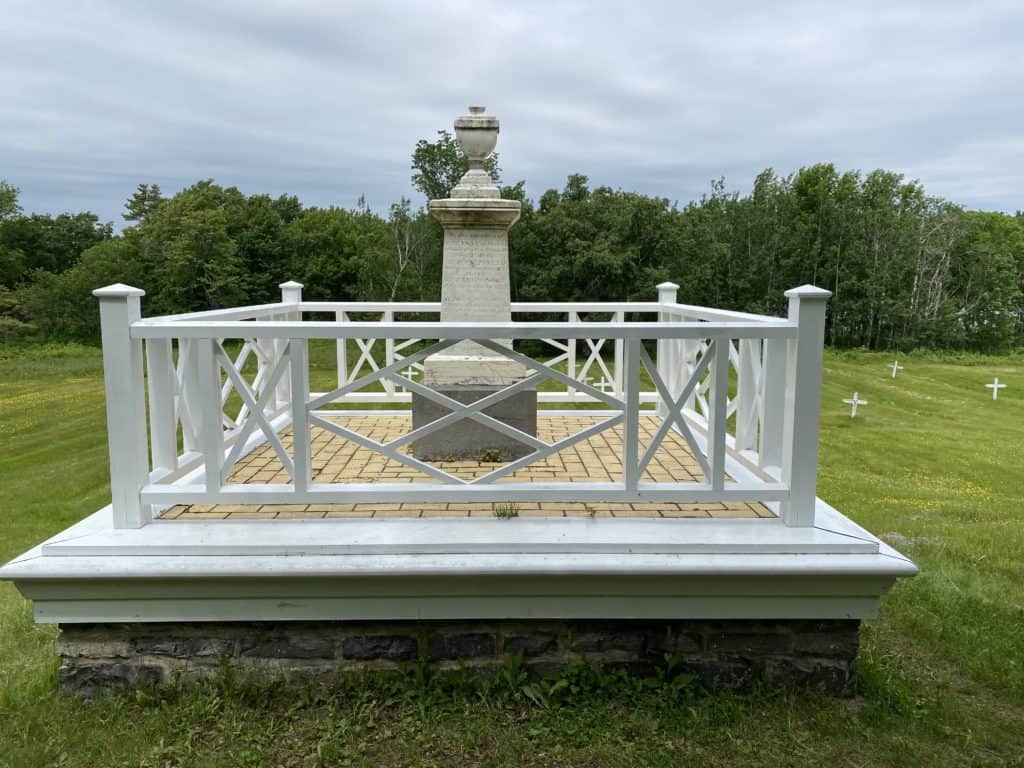
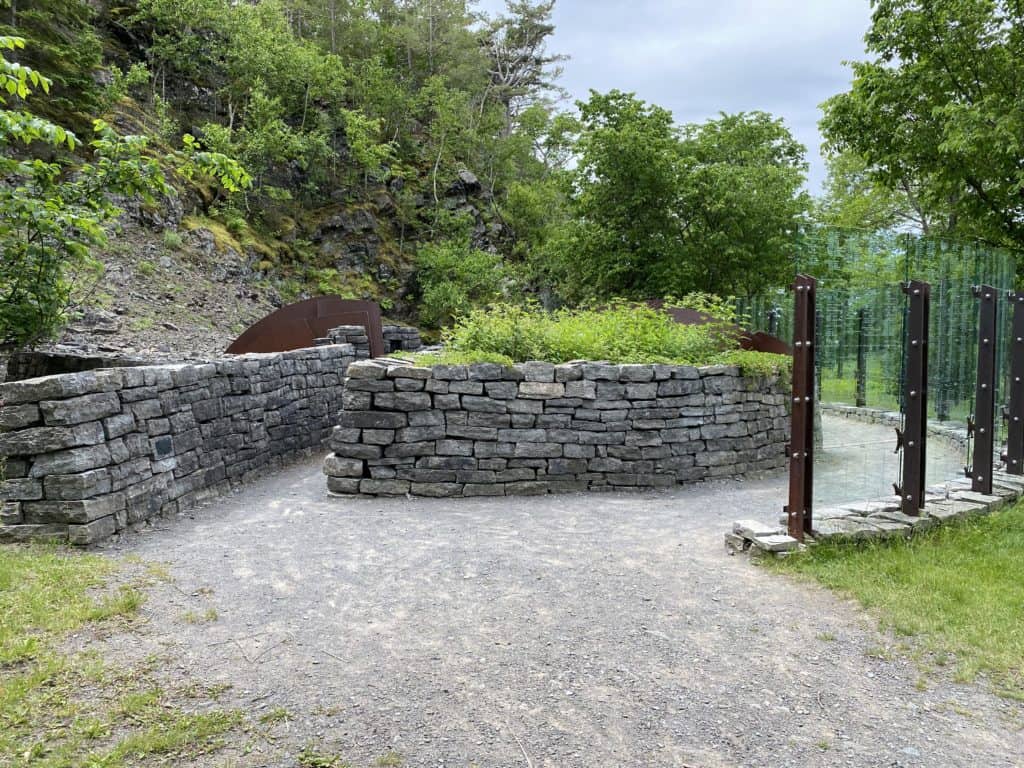

Lunch Break
We had a short break for lunch before the afternoon segment of our tour. There are no shops or restaurants on the island so you need to either pack your own lunch/snacks or purchase from the cruise company. There were a few extra lunches available that guests were able to purchase on the day of the tour but I’m not sure that you can always count on that.
We pre-ordered two lunches to make do for the three of us and it was plenty as each had a sandwich, an apple, a dessert and a drink packed in an insulated bag. (The cost at the time was $19.99 per lunch)
There are a number of picnic tables outside as well as an indoor seating area and restrooms available.
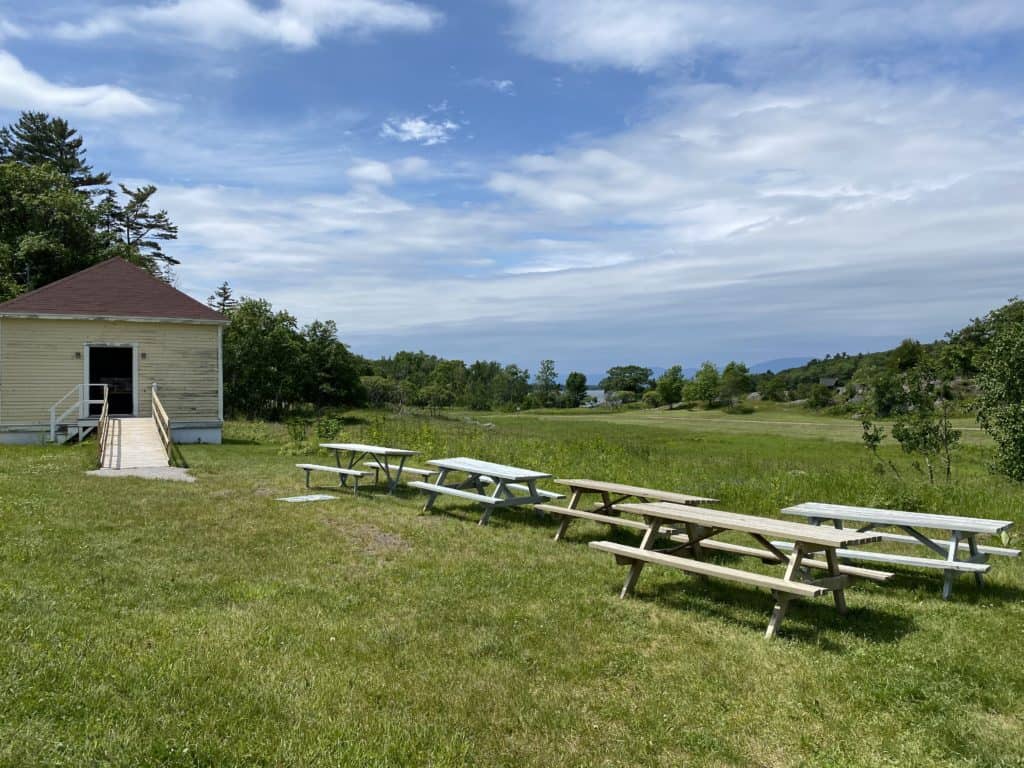

Trolley Tour to Central and Eastern Sectors
After lunch everyone boarded the trolley with our Parks Canada guides to visit the old village of Saint-Luc-de-la-Grosse-Île in the Central Sector and the Eastern Hospital Sector.
One of the guides provided commentary while we were driving and there were a couple of stops to see a church and the horse-drawn ambulance in the Central Sector and to see the hospital facilities in the Eastern including the red room of the Lazaretto that was used for treating smallpox patients. There wasn’t much time at either of these stops as they needed to get us back in time for the ferry departure.
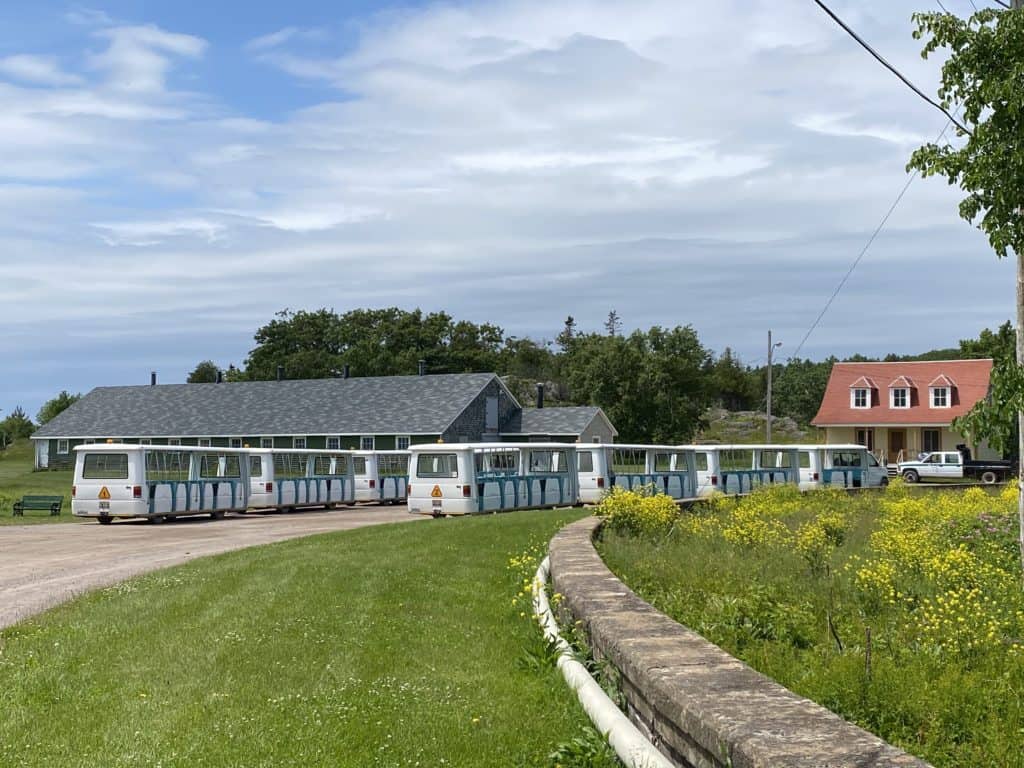
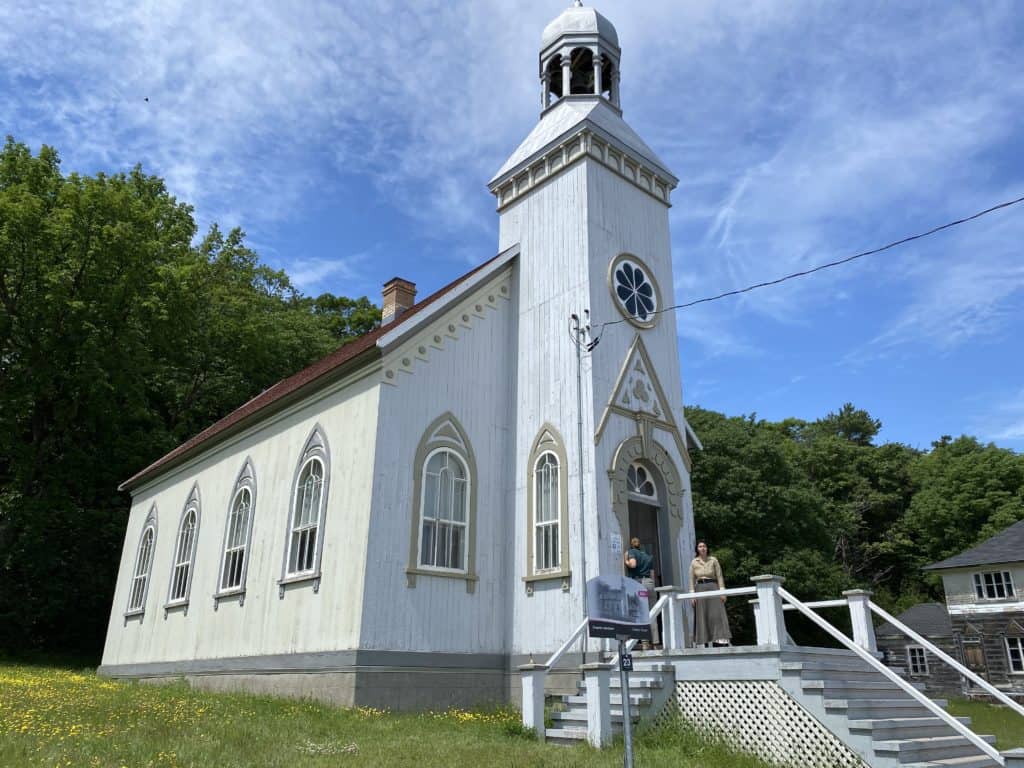
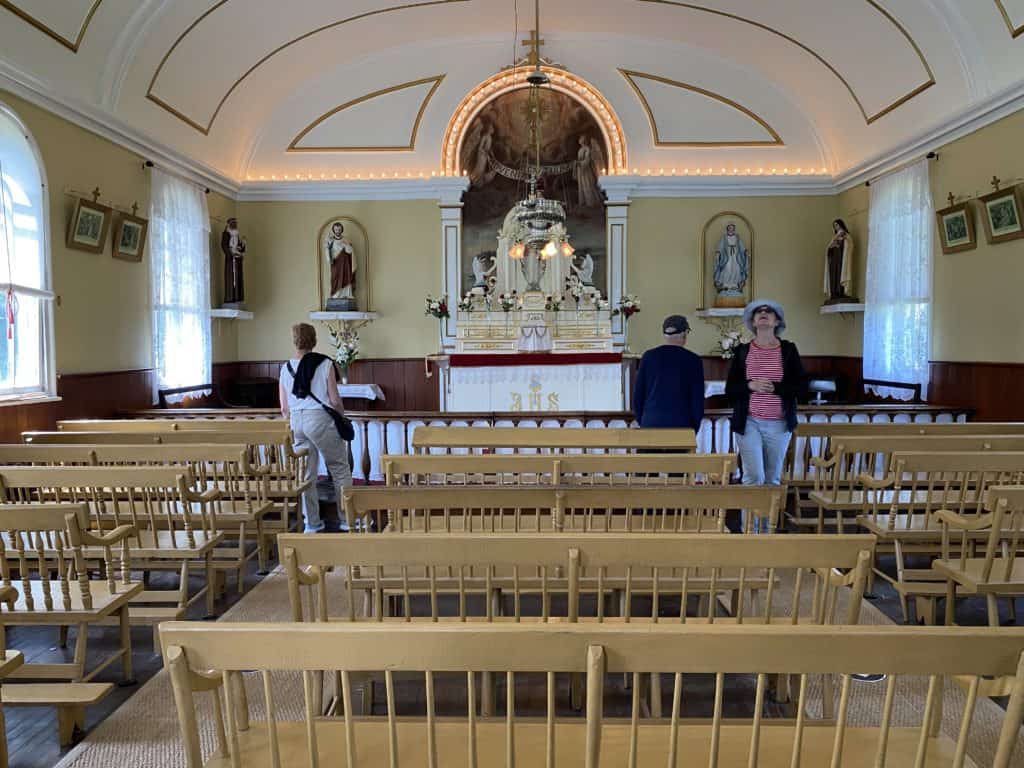
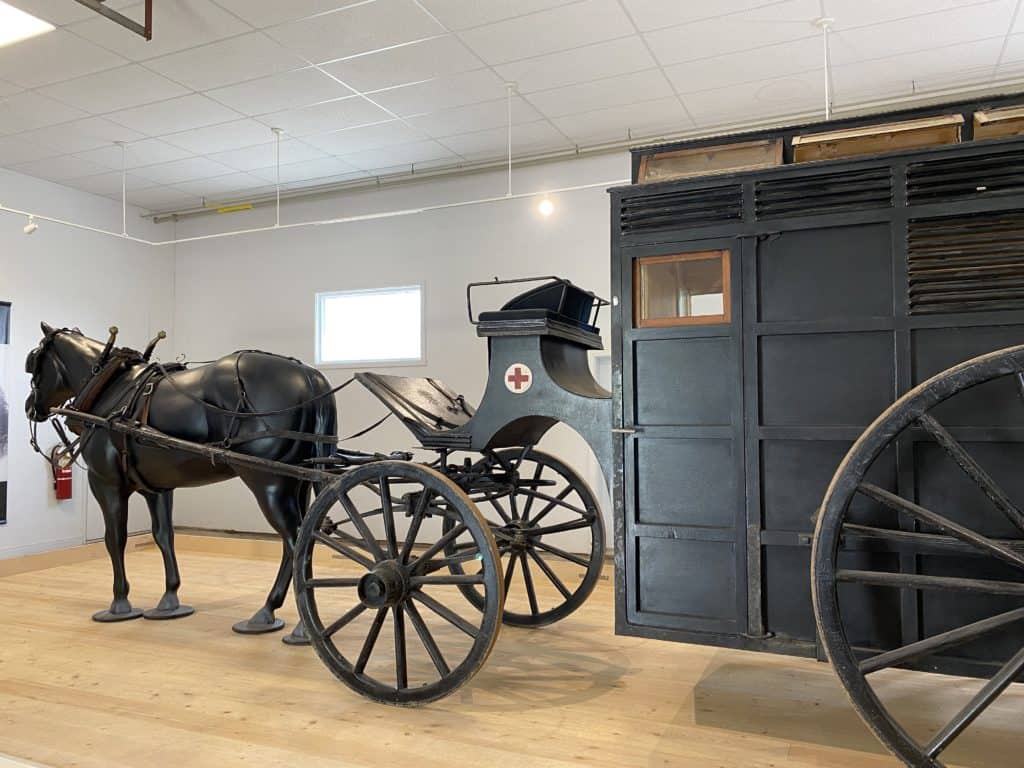
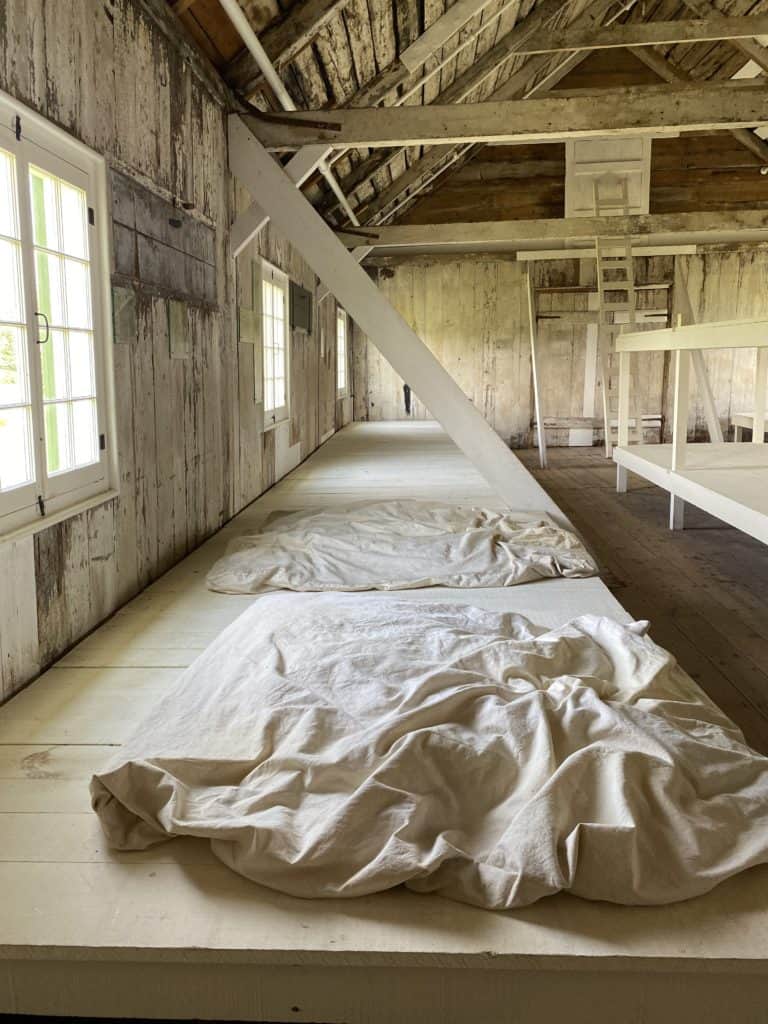
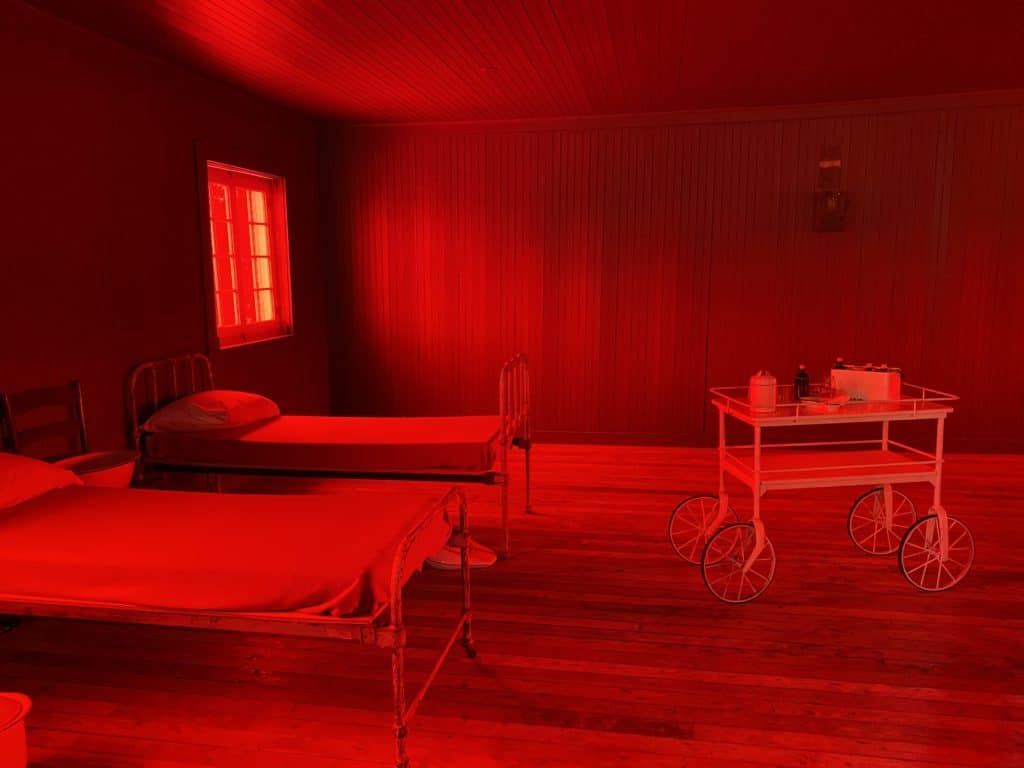
Departing Grosse-Ile
Mid-afternoon we boarded the ferry again for our return to Berthier-sur-Mer with the Parks Canada guides and costumed interpreters waving us off.
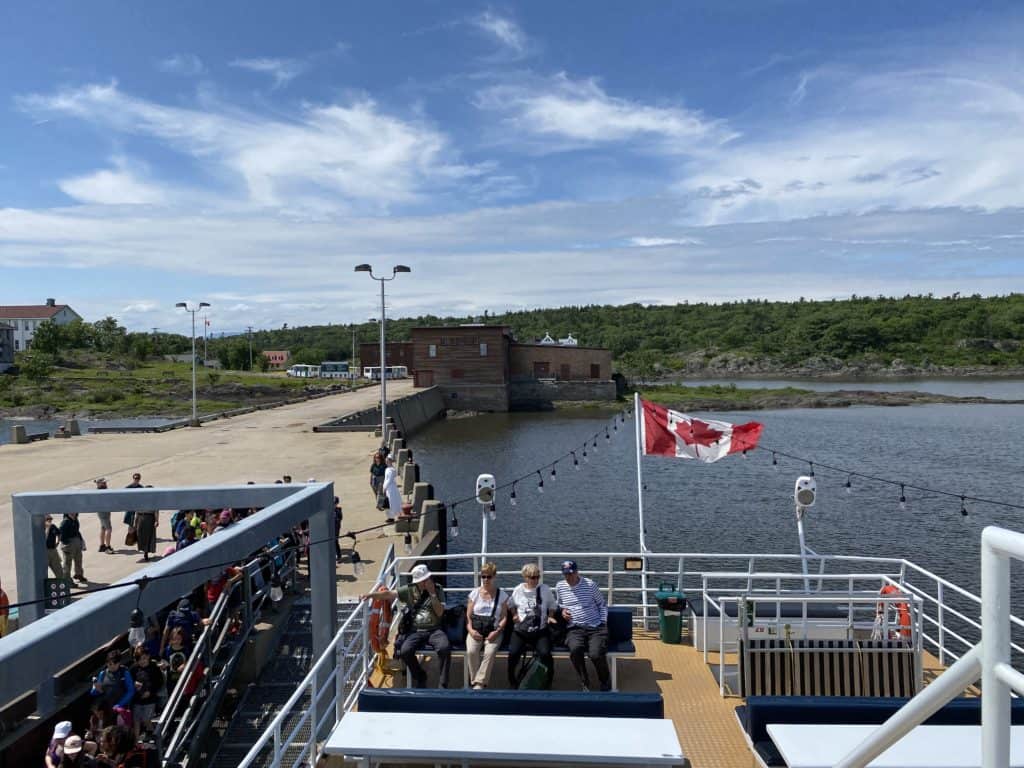
What You Need To Know
- The site is open seasonally late May until early October (May 18-October 10, 2022) – Saturdays and Sundays only until June 23, every day from June 24 until September 5, and Wednesday through Sunday September 5 until October 10. Length of visit is dependent on the schedule of the private ferry company (generally about 4 hours).
- Parks Canada admission fees are included in the fee charged by the ferry company. The cost of the adult fare at the time of our visit was $79.99.
- Be sure to wear good walking shoes.
- Much of your time on the island will be outdoors so dress appropriately. It can also be cool on the boat ride even when the temperatures on land are warm.
- There are picnic tables and an indoor dining area available, however, there is no full meal service so either pack a lunch or pre-order from the boat company.
Related Articles
Gaspé Road Trip: A 6 Day Tour of the Beautiful Gaspé Region of Québec
20 of the Best Things To Do in Québec City on a Summer Visit
A Scenic Road Trip from Québec City to the Charlevoix Region
8 of the Best Day Trips from Québec City
Visiting the Shrine of Sainte-Anne-de-Beaupré in Québec
Visiting Breathtaking Montmorency Falls, Québec
10 Things To Do at the Québec Winter Carnival
Pin This For Later
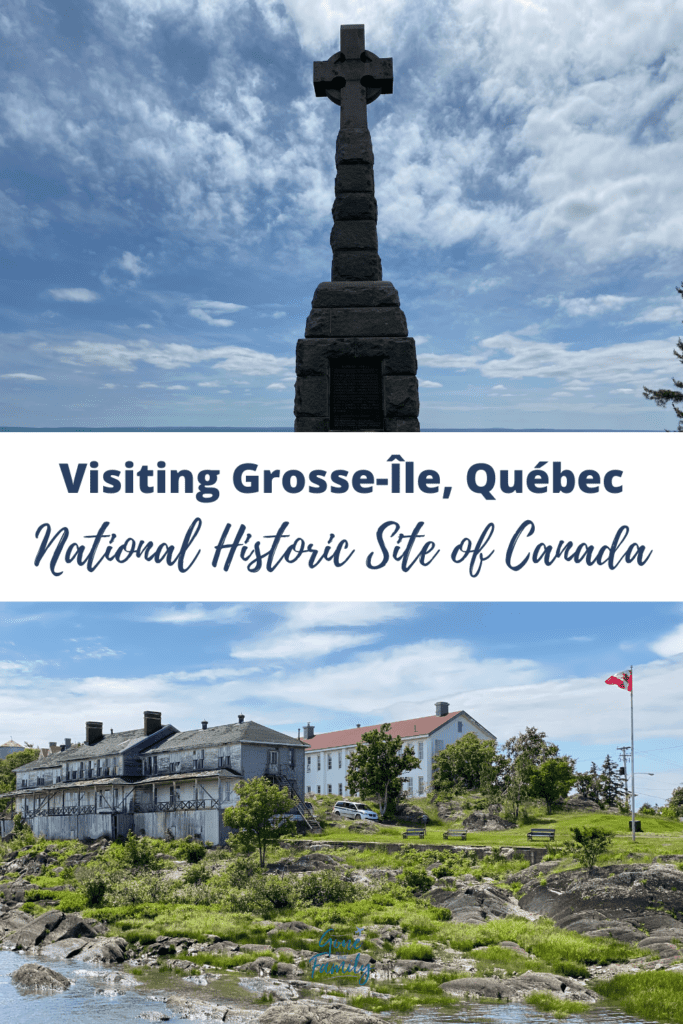

Leave a Reply